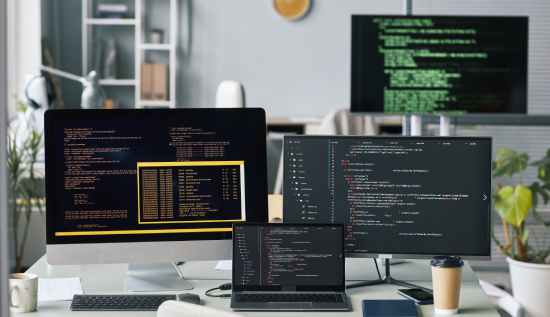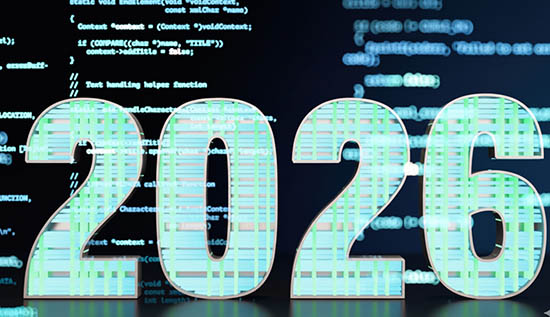What Is Digital Employee Experience and How It Increases Work Productivity

How digital employee experience impacts productivity. Best practices, software, and metrics to optimize workplace efficiency.
Companies today are putting more effort into improving the digital employee experience (DEX) to make workers more productive, engaged, and happy with their jobs generally. As more businesses use hybrid and remote work methods, it's more important than ever that employees have a smooth, efficient, and digital workplace employee experience.
This article talks about what "digital employee experience" means, why it's important, and how using a digital employee experience platform can make your employees much more productive. We will also talk about the best digital employee experience tools, how to design digital employee experience, and how to measure digital employee experience effectively.
Understanding Digital Employee Experience (DEX)
When an employee works for a company, they use digital tools, platforms, and methods. This is called their "digital employee experience." It includes how easy it is to use software, how well communication tools work, and how easy it is to get to resources at work.
A good digital employee experience management plan makes sure that workers have the tools they need to do their jobs well, work together easily, and stay interested. When businesses buy digital employee experience software, they often get better performance, more loyal employees, and better business results.
Why Digital Employee Experience Matters for Productivity
Streamlines Workflows
A well-designed digital workplace employee experience makes daily chores easier for employees by getting rid of unnecessary obstacles. By using digital employee experience tool such as teamwork platforms and project management software and also AI-powered assistants or workers can focus on important tasks instead of battling with systems which don't work well.Enhances Employee Engagement
When employees have a digital employee experience, they are more likely to feel linked to their work and the company. A digital employee experience platform that has personalized dashboards, real-time feedback and also recognition tools can do a lot to boost drive and morale.Supports Remote and Hybrid Work
Businesses need strong digital employee experience management to make sure that remote workers stay busy as flexible work models become more popular. With cloud-based digital employee experience software, you can easily access your files, apps and also team chats from anywhere.
Reduces Onboarding and Training Time
A digital workplaces employee experience that is easy to use makes it faster for new employees to learn how to do their jobs. Interactive training modules, knowledge bases and also chatbots driven by AI are all examples of modern digital employee experience tool that help workers get up to speed more quickly.Improves Data-Driven Decision Making
Companies can find slow spots, keep track of employee engagement and improve workflows by using analytics in a digital employee experience platform. How to measure digital employees experience depends on key metrics such as the rate at which software is adopted the time it takes to complete tasks and also feedback from employees.
How to Design Digital Employee Experience for Maximum Impact
A strategic method is needed to make the digital employee experience great. Here's how businesses can come up with and use a good DEX strategy:
Assess Current Digital Tools and Gaps
Do an audit of the digital employee experience software that you already have and look for trouble spots. Are workers having a hard time with slow systems? Is working together broken up into different apps? Fixing these problems is the first thing that needs to be done to improve the digital workplace employee experience.
Pick the right digital platform for the employee experience
Invest in a digital employee experiences platform that brings together important tools like learning courses, HR systems, communication tools and project management tools into a single interface. Microsoft Viva, ServiceNow, and Workday are some of the best tools for digital employee experience management.
Make user-friendly design a top priority
The ease of use should be your first consideration when choosing digital employee experience tools. Interfaces that are too hard to use make people frustrated and less productive. Make sure the software is easy to use, works well on mobile devices and can be changed to fit different jobs.
Encourage a culture of giving feedback all the time
Ask your digital employee experience on a regular basis. Organizations can figure out what's working and what needs to be fixed by using tools like surveys, focus groups, and mood analysis.
Make use of AI and automation
Digital employee experience software that is powered by AI can do repetitive tasks automatically, make personalized suggestions, and give real-time support. For example chatbots can answer common HR questions which frees up workers to work on more important tasks.
How to Measure Digital Employee Experience
Key performance indicators (KPIs) must be tracked by organizations to make sure which DEX efforts work. Here are some ways of measure digital employee experience:
- Employee Net Promoter Score (eNPS): This score shows on how likely workers are telling others about the digital tools about the company offers.
- Software Usage Analytics: Keeps track of how many digital employee experience tool are used and how engaged employees are with them.
- Task Completion Time: Checks to see if digital changes are speeding up work processes.
- Employee Feedback Surveys: Get direct feedback on how well it works how happy employees are and where problems are.
- Productivity Metrics: Checks output quality and efficiency before and also after DEX improvements.
Top Digital Employee Experience Tools and Platforms
Several top options help businesses improve the digital workplace employee experience:
- Microsoft Viva: Digital employee experiences platform that includes tools for learning, communicating, and taking care of well-being.
- ServiceNow Employee Experience: This section is all about making service delivery and processes more efficient.
- Workday: HR and talent management as a part of a full digital method to managing the digital employee experience management.
- Slack and Zoom: Make it easier to work together and talk to each other in real time.
- Qualtrics EmployeeXM: Uses data to measure and improve the digital employee experience.
Conclusion
A well-designed digital employee experience is no longer a nice-to-have; it's a must for modern companies that want to increase output and employee happiness. Companies can make the workplace a great place to work by investing in the right digital employee experience platform, using smart digital employee experience tools, and improving digital employee experiences management all the time.
It is important for how to design digital employee experience and how to measure digital employees experience. As technology changes, so should the ways that companies try to keep their workers interested, productive, and in charge in the digital workplaces employee experience.
Read More: What are the Benefits of Using Digital Workspace?
More Articles
 15 Dec 2025
15 Dec 2025
Full-Stack vs Backend vs Frontend: Which Path to Choose?
Full-Stack vs Backend vs Frontend: Compare roles, skills, responsibilities, and salaries to see which software development path fits your career goals.
 12 Dec 2025
12 Dec 2025
Top Programming Languages to Learn in 2026
Updated overview of top programming languages to learn in 2026 focused on growth potential, developer pathways, industry needs and real applications.
 11 Dec 2025
11 Dec 2025
Deep Learning Video Editing: AI-Powered Post-Production
Deep learning video editing brings advanced automation and AI precision to modern post-production, giving creators smoother, smarter ways to shape video content.
 10 Dec 2025
10 Dec 2025
Latest Freelancing Trends in Technology for Remote Work
Stay ahead in remote work with insights on Freelancing trends in technology, top skills and global technology freelance opportunities.